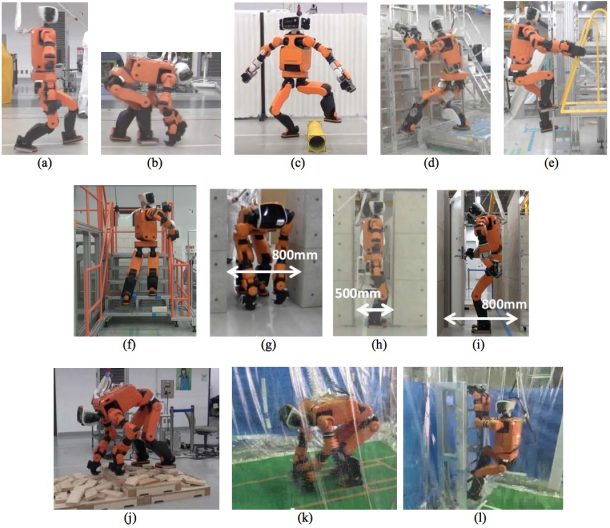The International Conference on Intelligent Robots and Systems (IROS) is held every year where some of the brightest robot ideas are featured. Honda revealed a prototype of disaster relief robot named E2-DR at the IROS, 2017 that was held on Sept 24- Sept 28 in Vancouver, Canada.
Honda first presented a paper about the experimental disaster relief robot at the IROS, 2015. The one presented this year was titled “Development of Experimental Legged Robot for Inspection and Disaster Response in Plants,” and it had complete details about the flexibility, strength, and waterproof capabilities of the prototype robot. The robot’s torso can rotate by 180 degrees, and the grip of its hands is good enough to climb up the ladders. It can walk at a speed of 2 km/h, step over a pipe as wide as 200 mm, walk through rain for 20 minutes, walk on debris, and even climb a vertical ladder up and down.
The E2-DR is only 5.5 feet (168 cm) tall and weighs 85 kilograms (187 lbs). Its thickness of only 9.8 inches (25 cm) allows it to get through the narrowest of places. The 1,000 Wh battery allows one hour of continuous operation. The robot uses optical fiber cables in place of standard communication cables for a much smaller size. E2-DR is designed with an internal cooling system to prevent overheating, and it can operate between -10-degree-Celsius to 40-degree-Celsius (14 to 104 degrees Fahrenheit).

The head of the robot is made up of laser rangefinders, cameras, and an infrared light projector. Each of its hand has several cameras and a 3D camera embedded into it. While the prototype delivers the expected features, Honda believes that it needs a lot more work to become useful and viable. The E2-DR has been in works for years. However, no date has been disclosed when the final model of the robot will be released.
The final version of the E2-DR may be able to do some marvelous things. Honda keeps the scope of the project a secret, so what do we know? Let us wait and watch!


